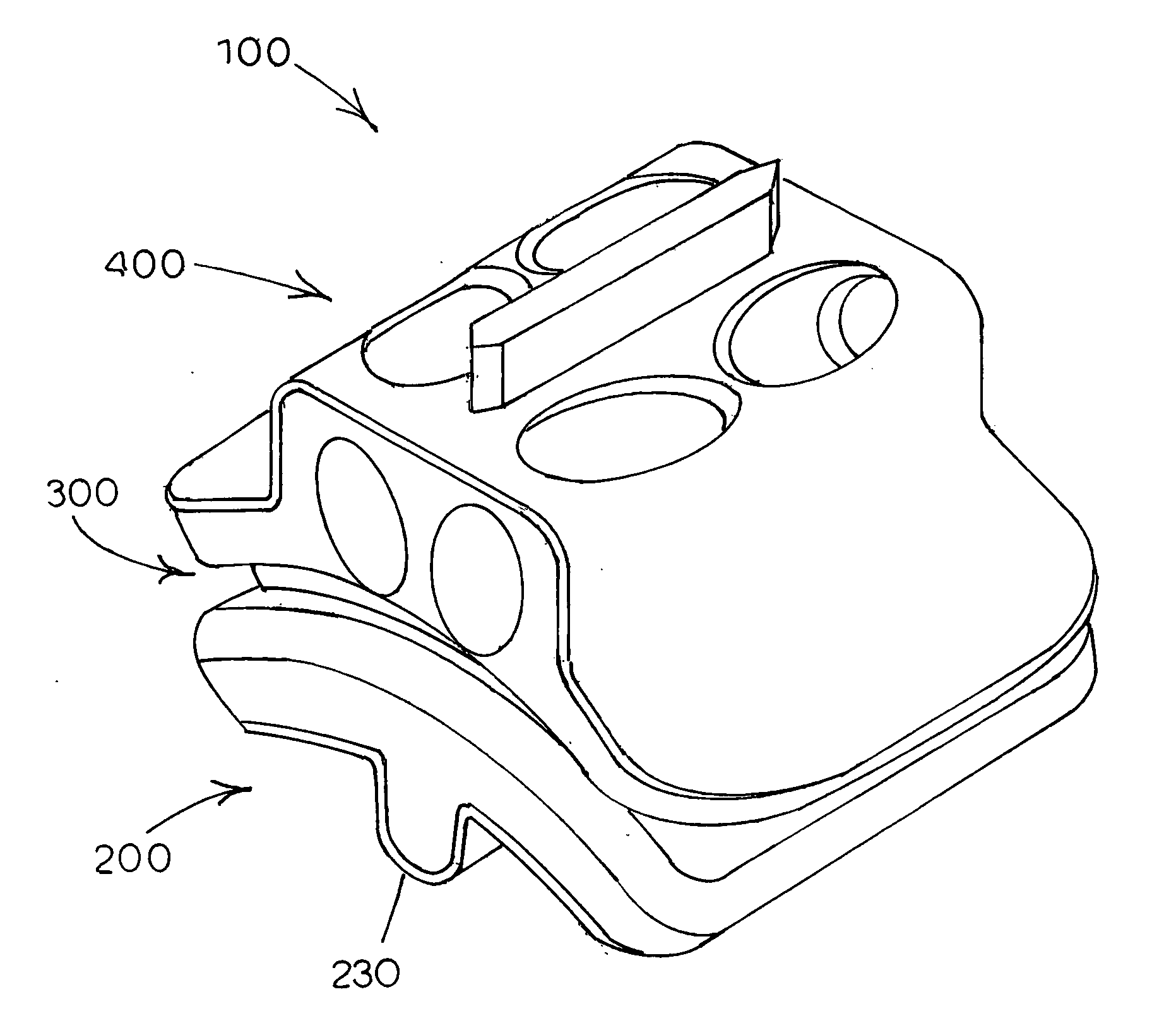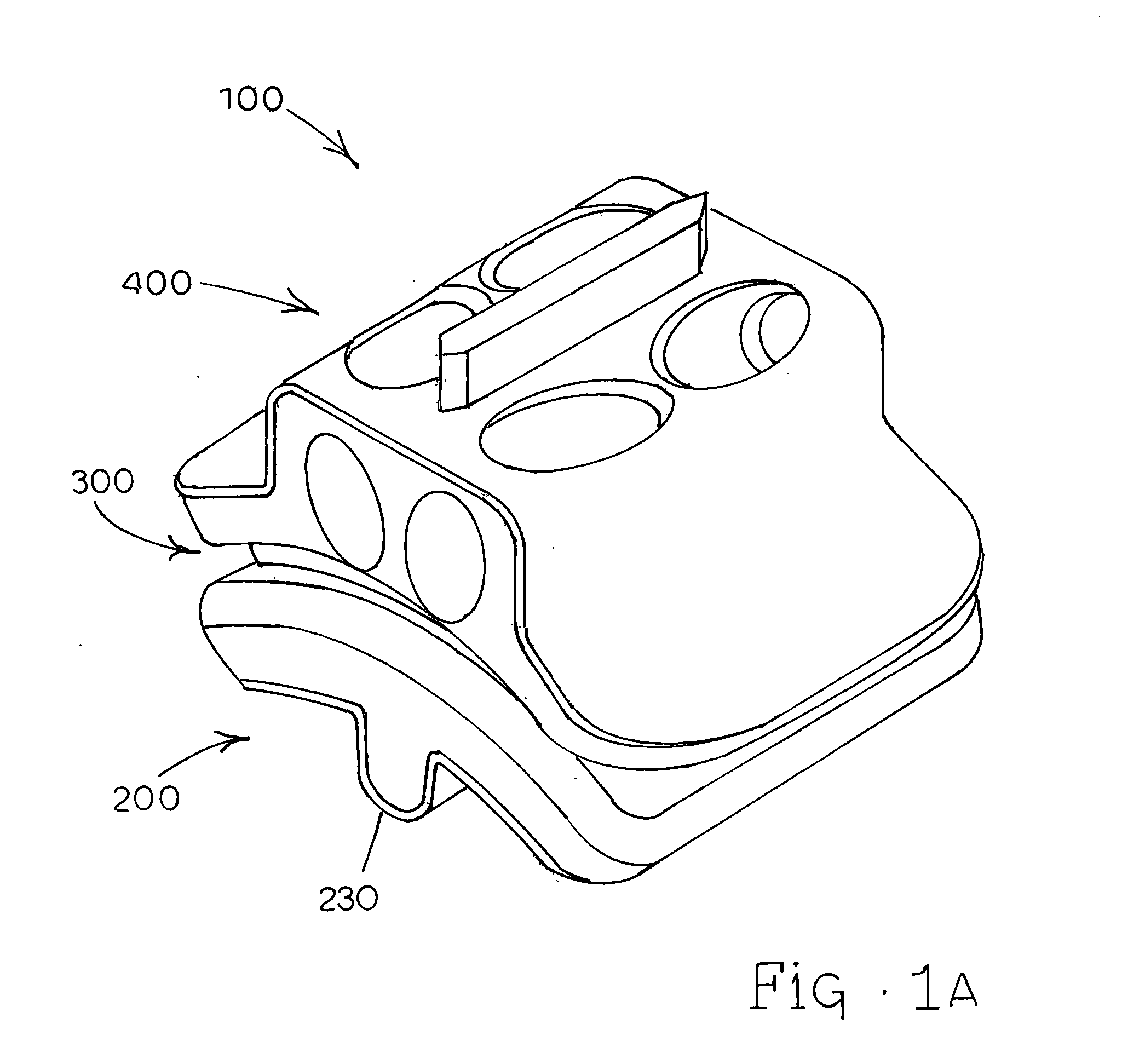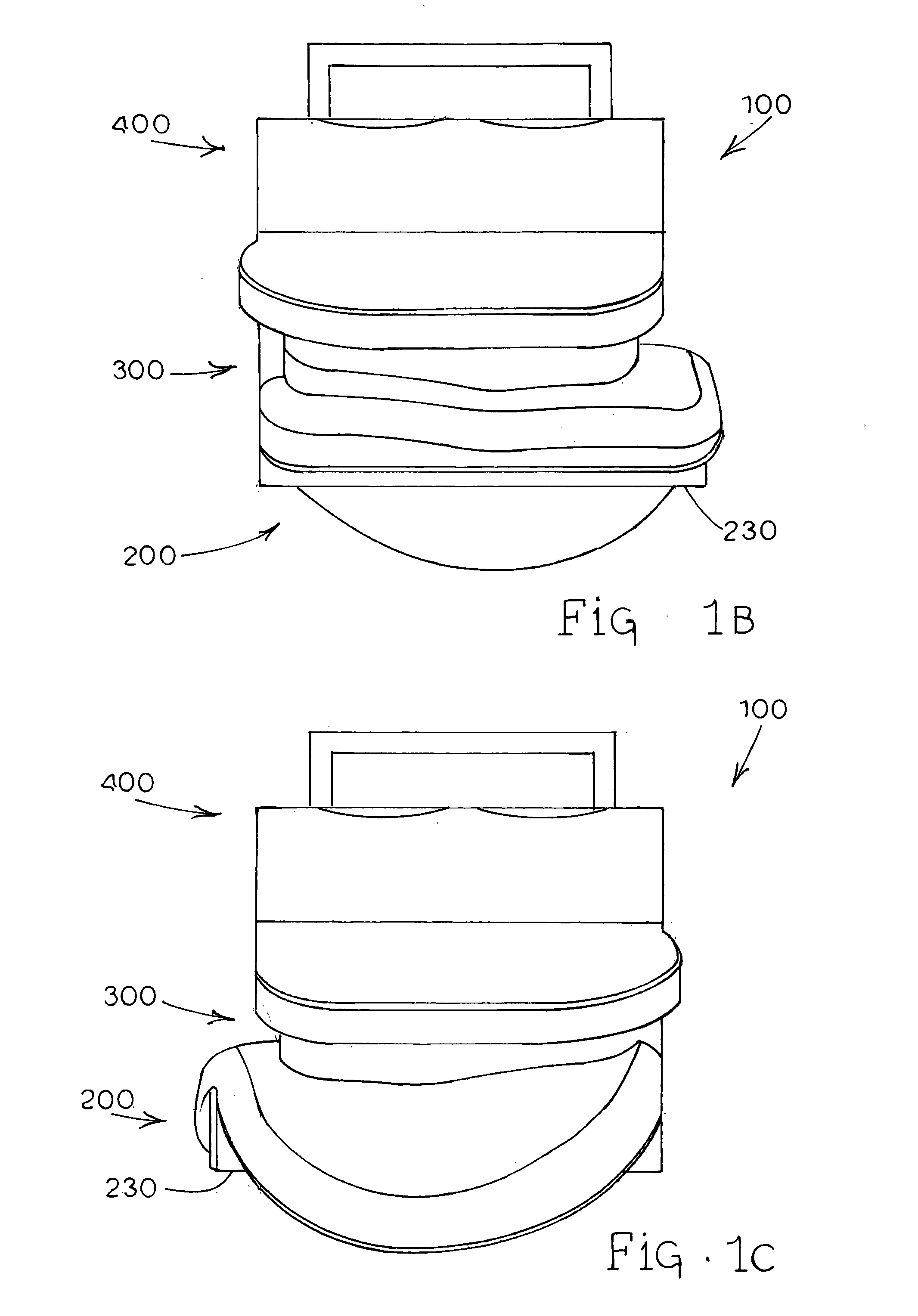Modular total ankle prosthesis apparatuses, systems and methods, and systems and methods for bone resection and prosthetic implantation
a total ankle and prosthesis technology, applied in the field of orthopaedic prostheses, can solve the problems of affecting the treatment effect the concept of total ankle arthroplasty has a long and relatively unsuccessful history, and the replacement of an ankle joint can be particularly problematic, etc., to achieve the effect of improving the quality of li
- Summary
- Abstract
- Description
- Claims
- Application Information
AI Technical Summary
Benefits of technology
Problems solved by technology
Method used
Image
Examples
Embodiment Construction
[0065] In accordance with the present disclosure, ankle prosthesis apparatuses, systems and methods are provided. Additionally, systems and methods for bone resection and implantation of prosthetics are provided, including surgical techniques and related instrumentation.
[0066] Referring to FIGS. 1A-1H of the drawings, various views of an assembled ankle prosthesis apparatus generally designated 100 are provided. Referring specifically to FIG. 1A of the drawings, a top perspective view of an embodiment of ankle prosthesis apparatus 100 is illustrated. As shown, ankle prosthesis 100 comprises a lower talar component generally designated 200, a bearing component generally designated 300 positioned above and against talar component 200, and an upper tibial component generally designated 400 positioned above and against bearing component 300. FIG. 1B of the drawings provides an anterior view of ankle apparatus 100, and FIG. 1C of the drawings provides a posterior view of ankle apparatus...
PUM
 Login to View More
Login to View More Abstract
Description
Claims
Application Information
 Login to View More
Login to View More - R&D
- Intellectual Property
- Life Sciences
- Materials
- Tech Scout
- Unparalleled Data Quality
- Higher Quality Content
- 60% Fewer Hallucinations
Browse by: Latest US Patents, China's latest patents, Technical Efficacy Thesaurus, Application Domain, Technology Topic, Popular Technical Reports.
© 2025 PatSnap. All rights reserved.Legal|Privacy policy|Modern Slavery Act Transparency Statement|Sitemap|About US| Contact US: help@patsnap.com



